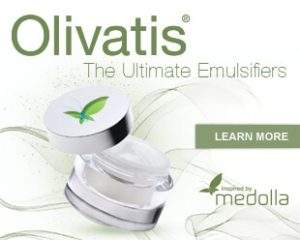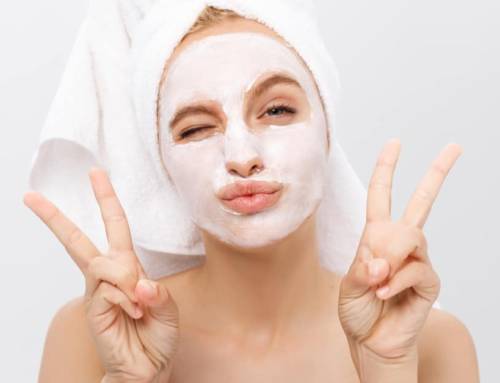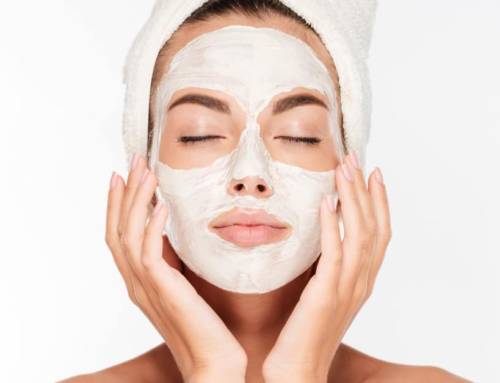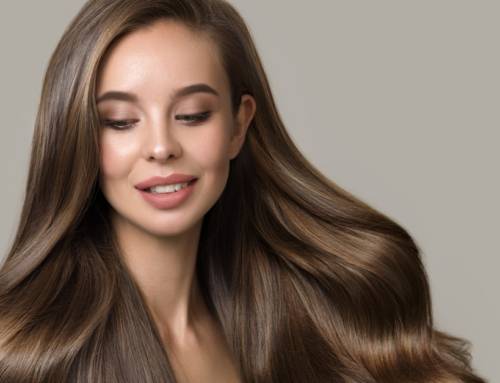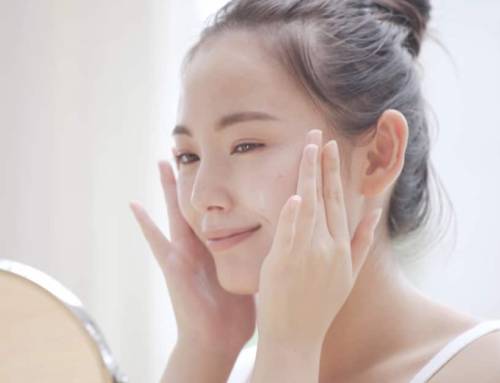Skin Wellness, Part 1: The Skin Microbiome
By Traci Cassell • June 23, 2020

Trending toward protection
One of the hottest trends in skincare today involves the skin microbiome, which is the ecosystem of bacteria that live on the skin. Now understood to be a critical part of maintaining the health and appearance of skin, consumers around the globe are clamoring for microbiome-boosting products.
“The general population is beginning to understand that the innate resilience of the skin lies in the skin-microbiome relationship,” says Paul Schulick, co-founder of skincare company For The Biome. “As more consumers become educated on the skin-microbiome relationship, they’ll naturally want to do a better job of nourishing and protecting their skin’s microbial environment.”
While the skin microbiome movement is relatively new, the intense interest in protecting the skin microbiome is an exciting and burgeoning development for formulators who want to offer innovative solutions to consumers seeking their healthiest, best-looking skin.

Meet the microbiome
The human skin contains a system of thousands of invisible microorganisms that live on the surface of the skin. These organisms (also called skin flora) range from good, to harmless, to damaging. Every human has a unique skin microbiome; no two are exactly identical. Each person’s skin flora plays a major role in determining how their skin looks and feels.
While the study of the microbiome is just gaining attention with consumers, scientists and dermatologists know that a healthy skin microbiome is critical to healthy, and optimal-looking, skin.
The importance of a healthy microbiome
The skin’s microbiome plays a pivotal role in creating and maintaining healthy, strong skin. Skin flora help in multiple ways, including:
- Boosting the skin barrier – Skin flora help maintain a strong physical barrier that can effectively block the entry of bad bacteria, germs, pathogens, and even viruses into the body.
- Creating essential nutrients and natural oils – Bacteria on the skin also work to produce essential nutrients and lipids (oils), which help maintain skin moisture and firmness.
- Preventing infection – a healthy skin microbiome fights infections by crowding out the growth of pathogenic organisms.
Plus, the skin’s bacteria systems also work to:
- Reduce inflammation
- Promote wound healing
- Minimize oxidative damage
In short? The health of the skin microbiome is truly the health of the skin.
Threats to skin flora
While the skin microbiome is critical to skin health and appearance, a large variety of environmental and lifestyle factors can harm the delicate and all important balance of the skin’s bacteria-based ecosystem.
Constantly shifting factors like age, diet, stress, exposure to pollution, and sun damage can negatively impact the skin flora. Additionally, the use of common household products like disinfectant and soap can also kill off e beneficial bacteria that the skin needs to thrive and function optimally.
The health of the skin microbiome is truly the health of the skin.
When the skin microbiome becomes imbalanced, both the health and appearance of the skin suffer. An unbalanced skin microbiome can lead to common issues like dryness, sensitivity, irritation, rashes, redness, and an increased risk of cuts, abrasions, or wounds. Scientific research has linked a disturbed skin flora system with issues like rosacea, atopic dermatitis, and acne.
Protect the microbiome with scientifically backed skincare
Over the past several years, scientists and formulators have discovered that the skin microbiome can be manipulated and changed for the better, with the aid of certain skincare products.
“Colonization is driven by the ecology of the skin surface, which is highly variable depending on topographical location, endogenous host factors and exogenous environmental factors. The cutaneous innate and adaptive immune responses can modulate the skin microbiota, but the microbiota also functions in educating the immune system,” according to “The skin microbiome” study published by Elizabeth A. Grice and Julia A. Segre in Nature Reviews Microbiology.
For the public, this is also exciting news. By tending to the skin’s microflora with three biotics, consumers have the potential to address long-term skincare issues like acne or psoriasis and help create better looking skin.
Biotics-infused formulations
The avalanche of recent interest in tending to the skin’s flora has sparked a launch of skincare formulations infused with three beneficial biotics: prebiotics, probiotics, and postbiotics.
- Prebiotics are substances on skin that feed and boost the growth and balance of probiotics.
- Probiotics are the beneficial living microbes on the skin that help stabilize the entire microbiome.
- Postbiotics are the byproducts generated after probiotics break down on and within the skin.
These three biotics work in tandem to maintain a healthy skin microbiome by promoting skin barrier strength, improving chronic skin conditions, and balancing the overall skin flora system.
The avalanche of recent interest in tending to the skin’s flora has sparked a launch of skincare formulations infused with three beneficial biotics: prebiotics, probiotics, and postbiotics.
- Prebiotics are substances on skin that feed and boost the growth and balance of probiotics.
- Probiotics are the beneficial living microbes on the skin that help stabilize the entire microbiome.
- Postbiotics are the byproducts generated after probiotics break down on and within the skin.
These three biotics work in tandem to maintain a healthy skin microbiome by promoting skin barrier strength, improving chronic skin conditions, and balancing the overall skin flora system.
Prebiotics for a stronger skin barrier
Prebiotics support the skin microbiome by serving as the food for the probiotics that live on the skin’s surface. Prebiotics are vital for the skin’s health, as these food sources encourage healthy strains of bacteria and increase the overall diversity of the bacteria within the skin microbiome.
According to Dr. Whitney Bowe, a board-certified dermatologist and the author of The Beauty of Dirty Skin, probiotics “are like the nourishing food that naturally allows healthy, good bacteria to thrive on your skin.”
Additionally, prebiotics offer up a veritable plethora of other benefits for the skin, including reducing dryness, fighting visible signs of aging like sagginess, and helping to restore the microbiome’s healthiest balance of “good” and “bad” bacteria. Thanks to all of these skin-strengthening qualities, prebiotics are most commonly used to build and protect the skin barrier and ensure the skin maintains proper pH levels within formulations.
“Prebiotics for skincare are proving to be imperative for a healthy skin barrier that can withstand the harsh environmental elements,” explains Blake Newby of The Zoe Report.
For formulators, prebiotics are the perfect natural ingredient to incorporate into strengthening, protective, and anti-pollution skincare products.
Probiotics for treating chronic conditions
Perhaps the most well-known of the three skin microbiome-protecting biotics, probiotics are the living, beneficial strains of bacteria that occur naturally on the skin. Probiotics help nourish, balance, and protect the entire system of skin flora, and are a vital component of treating a multitude of skin conditions.
Probiotics offer up potential relief for combatting acne and breakouts. According to a study published in the International Journal of Women’s Dermatology, “probiotics have been shown to directly inhibit P. acnes through the production of antibacterial proteins, and modify the barrier function of the skin with a secondary increase in antimicrobial properties of the skin.”
Even better news? Topically applied probiotics may be a less irritating treatment option for acne, as these helpful strains of bacteria are less likely to dry out the skin or cause redness.
Additionally, researchers have discovered that probiotics may be also highly efficacious for taming rosacea, the skin condition characterized by red skin, uncommonly high amounts of blushing and flushing, and visible blood vessels. Research shows that topically applied probiotics can send healthy communications to skin cells and thus prevent the “attack” signal to the immune system that causes rosacea flares.
Finally, the probiotic strains lactobacilli and lactococci help produce lactic acid, which can reduce the appearance of fine lines and wrinkles.
For consumers and formulators alike, probiotics truly offer up one of the best avenues to treat and heal a variety of common, chronic skincare issues.
Postbiotics for microbiome maintenance
Postbiotics, or the waste product of probiotics, are the final element of the equation to microbiome-beneficial skincare. Postbiotics are the leftovers of fermented probiotics that went through lysation or fermentation — think of them as the “insides” of bacteria.
“While probiotics get most of the attention, prebiotics and postbiotics play an equally (if not more so) vital role in microbiome skin care….When balanced, the bad and good bacteria on skin keep each other in check, working together to create postbiotics, which include peptides, proteins, amino acids, enzymes, hyaluronic acid, lactic acid, ceramides, antioxidants, and other substances that are vitally important for skin,” explains Paula’s Choice, one of the world’s first online beauty brands.
Postbiotics act as both antioxidants and humectants and help the skin microbiome by balancing moisture and hydration levels, improving firmness, and producing a glow. Ultimately, it is the beneficial ingredients from the breakdown of postbiotics that can help consumers achieve more radiant skin, faster.
The future of the microbiome
In recognition of the following potential advantages, it is clear that consumer’s interest in skin microbiome will only continue to colonize the future of innovative skincare formulations. Savvy consumers will be eager to try products that help the skin microbiome produce benefits like these:
- Promote the skin’s firmness.
- Improve skin barrier functioning and protection against the pollution, environmental, and lifestyle stressors that lead to signs of premature aging.
- Improve levels of moisturization and hydration.
- Offer temporary relief from chronic skincare conditions like acne, rosacea, and atopic dermatitis
- Create healthier, more radiant-appearing skin.
As more consumers understand that a properly protected and maintained skin microbiome can deliver these numerous benefits, manufacturers and formulators have a significant market opportunity to develop new skin care solutions that take the skin microbiome into account.
Go Beyond Beauty. Face ♦ Body ♦ Hair
Discover the most sophisticated, anti-aging ingredients portfolio for face, body, hair and scalp care applications.


